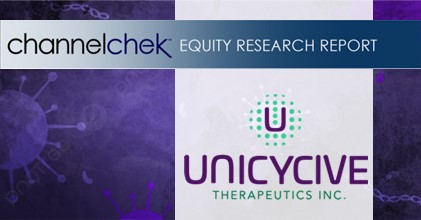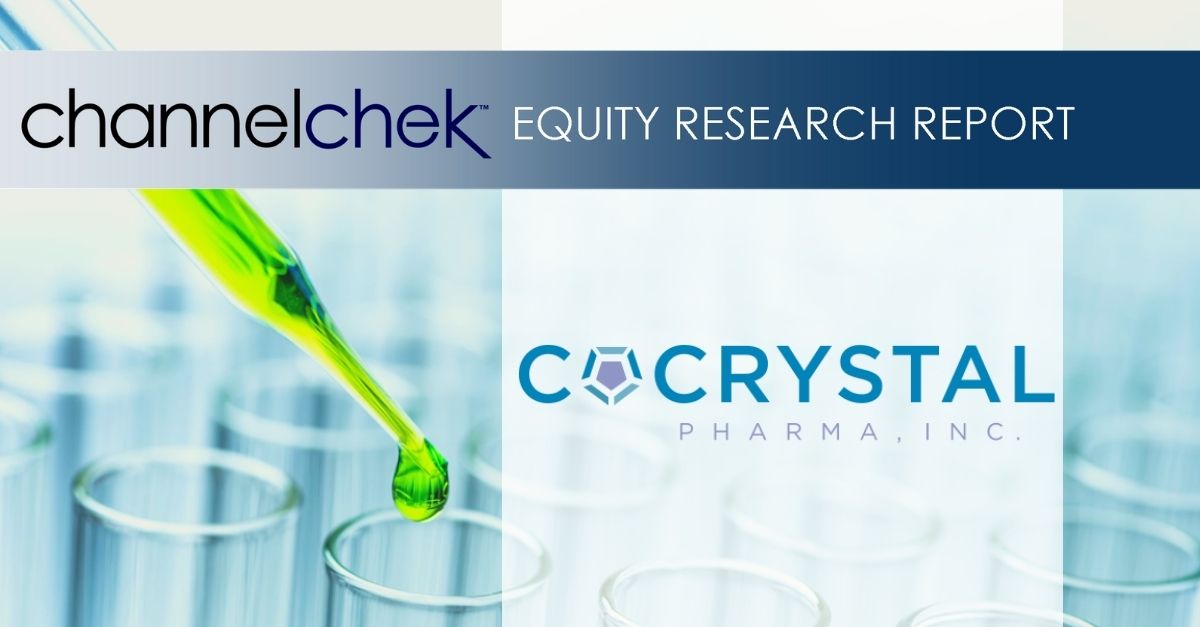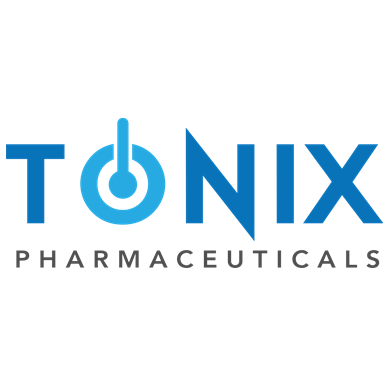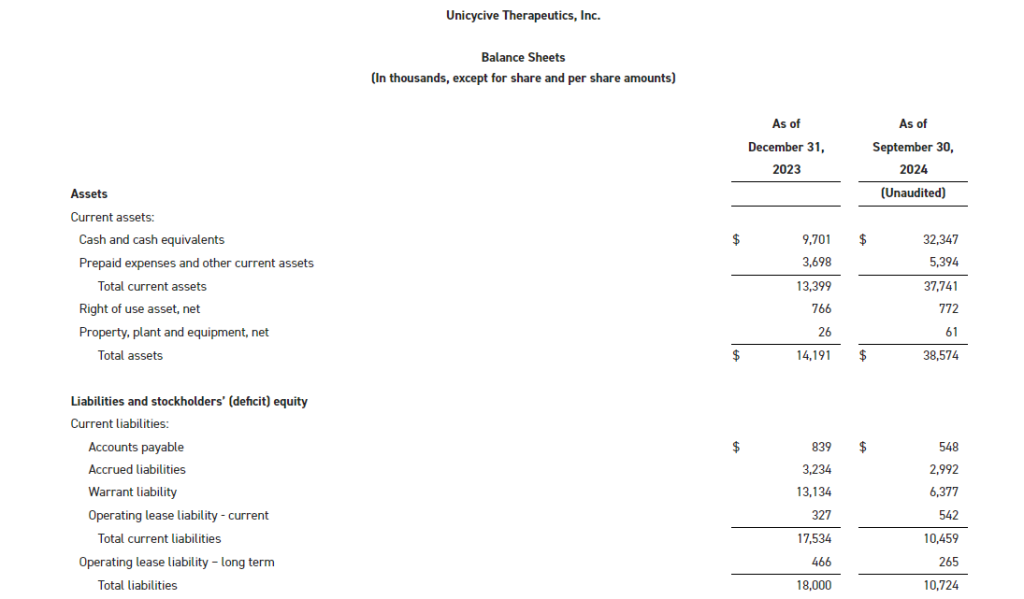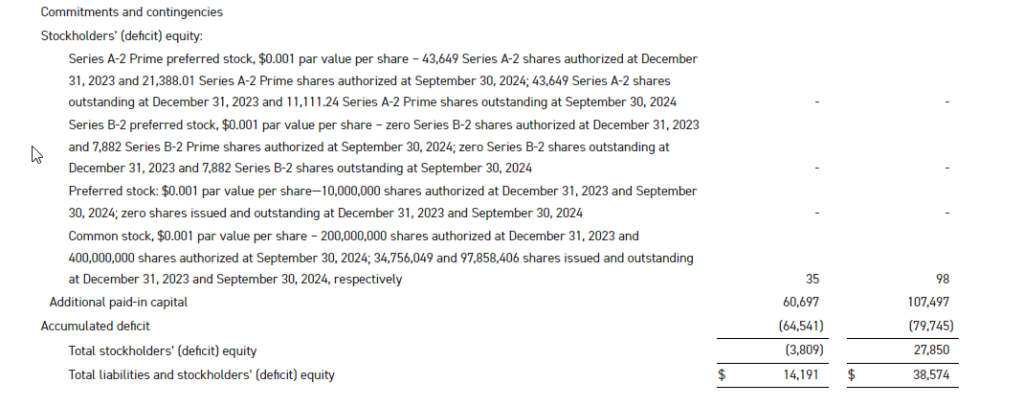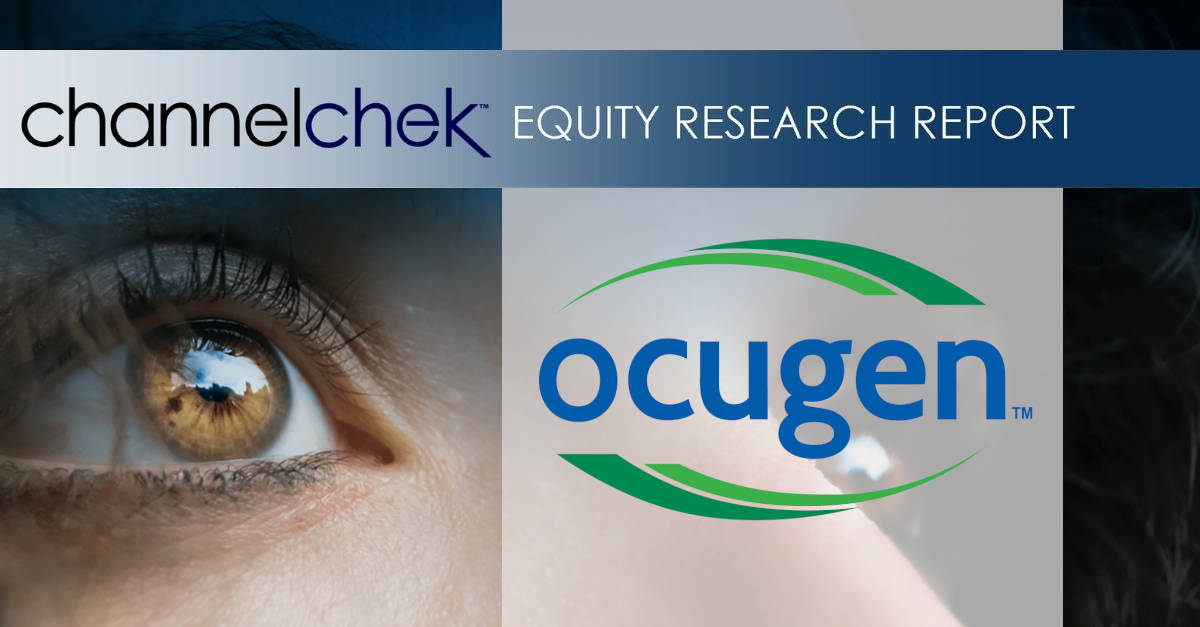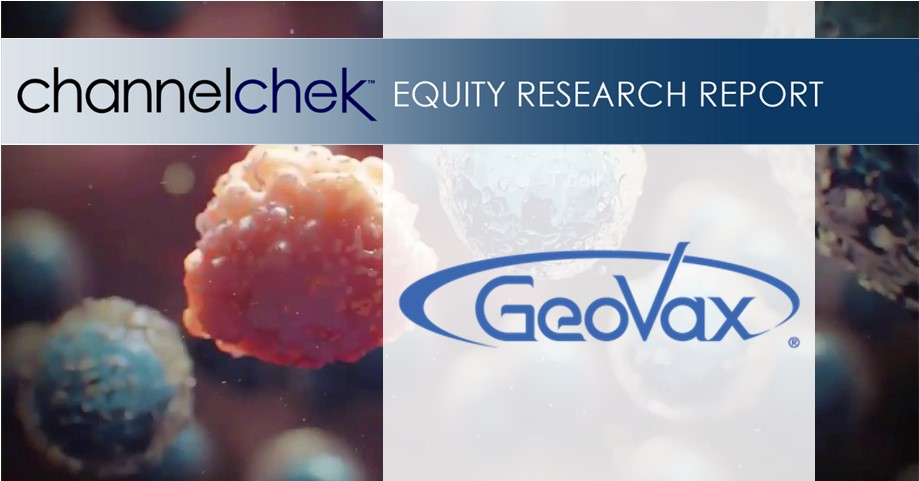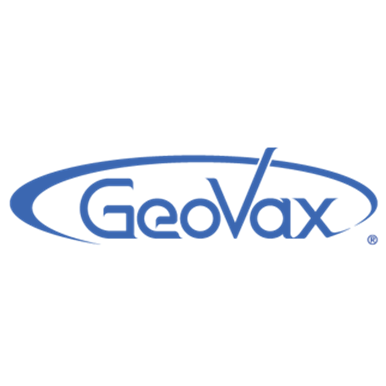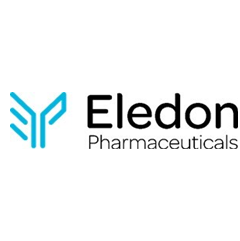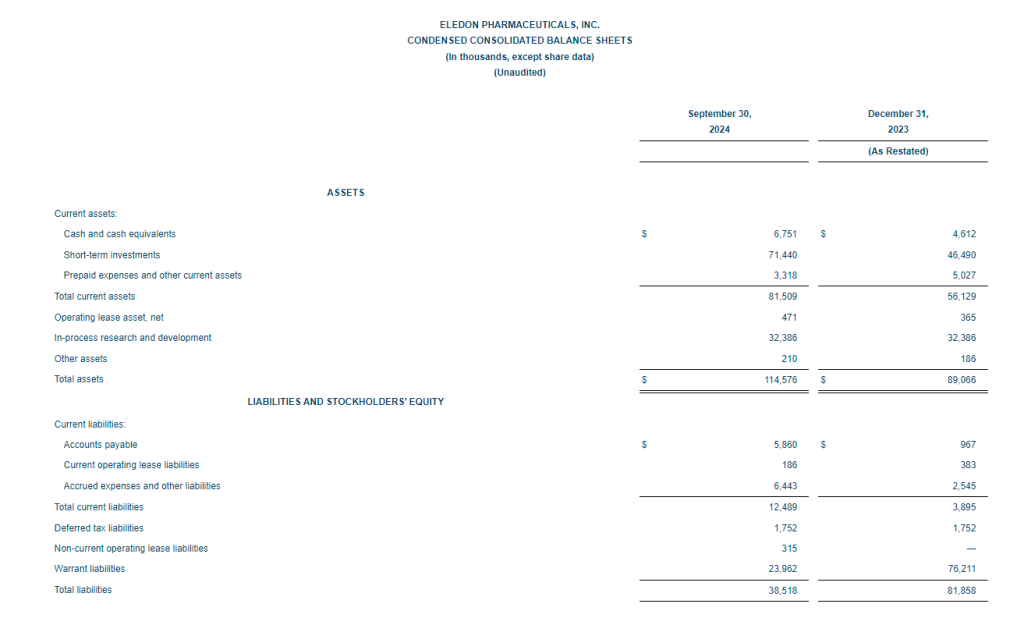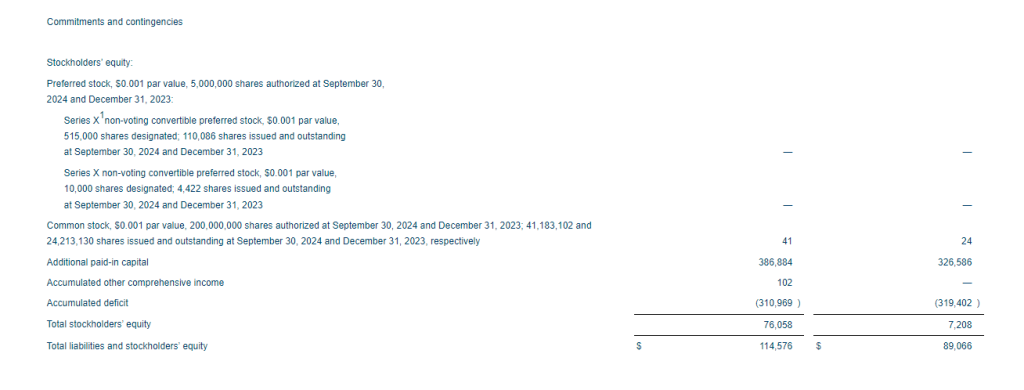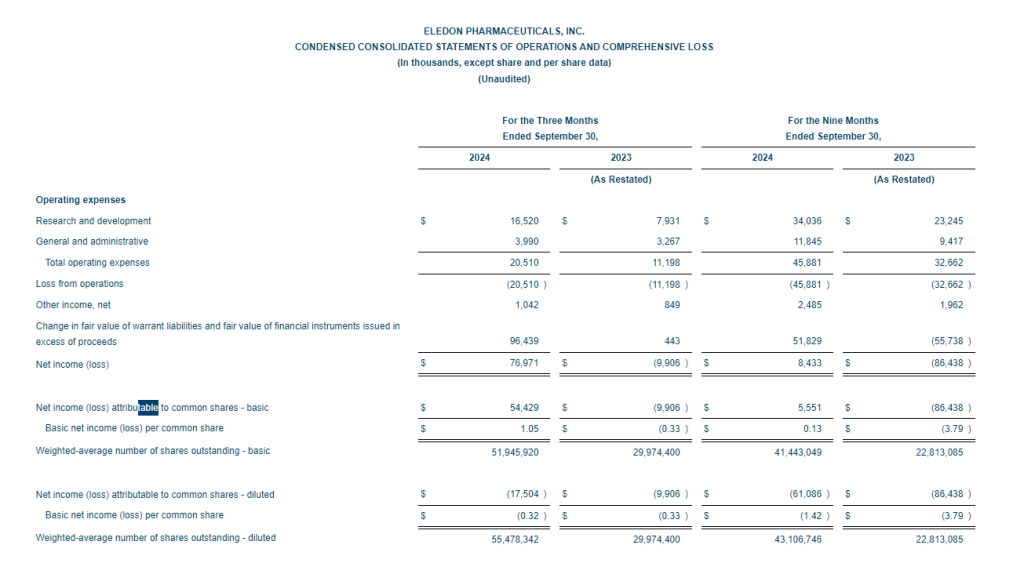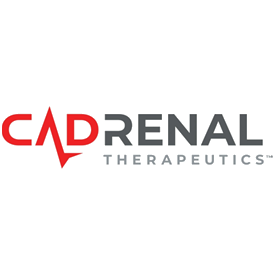Research News and Market Data on COCP
November 13, 2024
Download as PDF
BOTHELL, Wash., Nov. 13, 2024 (GLOBE NEWSWIRE) — Cocrystal Pharma, Inc. (Nasdaq: COCP) (“Cocrystal” or the “Company”) reports financial results for the three and nine months ended September 30, 2024, and provides updates on its antiviral product pipeline, upcoming milestones and business activities.
“The coming months are critically important to Cocrystal as we expect to report topline results from two ongoing clinical studies with our best-in-class antiviral candidates in major medical indications,” said Sam Lee, Ph.D., President and co-CEO of Cocrystal. “In the Phase 2a influenza A challenge study with our oral PB2 inhibitor CC-42344, we expect to report topline results before year end. Earlier this year, we received feedback from the U.S. Food and Drug Administration (FDA) on a Pre-IND package that improves our clarity on the regulatory path and requirements for the late-stage influenza A clinical study we plan to conduct in the U.S.
“The multiple-ascending dose portion in our Phase 1 pan-norovirus/pan-coronavirus study with oral protease inhibitor CDI-988 is underway and we are on track to report topline results in late 2024 or early 2025,” he added. “We view the development of an effective antiviral for norovirus as a significant opportunity for Cocrystal. There is no approved vaccine or antiviral for norovirus, which is highly contagious and the most common cause of acute gastroenteritis. In in vitro studies, CDI-988 exhibited pan-viral activity against multiple norovirus strains, including the strain that is responsible for major outbreaks.”
“Our significant clinical progress so far this year puts us on track for an active 2025,” said James Martin, CFO and co-CEO of Cocrystal. “I’m pleased to report that based on our currently projected expenditures and our cost-efficient business model, we expect our cash will be sufficient to fund the advancement of our planned development programs through the coming 12 months.”
Antiviral Product Pipeline Overview
We apply our proprietary structure-based drug discovery platform technology for developing broad-spectrum antivirals that inhibit viral replication. By designing and selecting antiviral drug candidates that target the highly conserved regions of the viral enzymes, we seek to develop drugs that are effective against the virus and mutations of the virus, and also reduce off-target interactions that may cause undesirable side effects. Our drug discovery process differs from traditional, empirical medicinal chemistry approaches that often require iterative high-throughput compound screening and lengthy hit-to-lead processes.
Influenza Programs
Influenza is a major global health threat that may become more challenging to treat due to the emergence of highly pathogenic avian influenza viruses and resistance to approved influenza antivirals. Each year there are approximately 1 billion cases of seasonal influenza worldwide, 3-5 million severe illnesses and up to 650,000 deaths. On average, about 8% of the U.S. population contracts influenza each season. In addition to the health risk, influenza is responsible for an estimated $11.2 billion in direct and indirect costs in the U.S. annually.
- Oral CC-42344 for the treatment of pandemic and seasonal Influenza A infections
- Our novel PB2 inhibitor CC-42344 showed excellent in vitro antiviral activity against pandemic and seasonal influenza A strains, as well as strains that are resistant to Tamiflu® and Xofluza®.
- In December 2022 we reported favorable safety and tolerability results from the oral CC-42344 Phase 1 study.
- In December 2023 we began a randomized, double-blind, placebo-controlled Phase 2a human challenge study to evaluate the safety, tolerability, viral and clinical measurements of CC-42344 in influenza A-infected subjects in the United Kingdom, following authorization from the UK Medicines and Healthcare Products Regulatory Agency (MHRA).
- In May 2024 we completed enrollment in the Phase 2a human challenge study.
- In June 2024 we reported that in vitro studies demonstrated CC-42344 inhibits the activity of the new highly pathogenic avian influenza A (H5N1) PB2 protein recently identified in humans exposed to infected dairy cows.
- We expect to report topline results from the Phase 2a human challenge study by yearend and plan to file an IND application in 2025 to conduct a late-stage study in the U.S.
- Inhaled CC-42344 for the therapeutic and prophylactic treatment of pandemic and seasonal Influenza A infections
- Our preclinical testing showed superior pulmonary pharmacology with CC-42344 including high exposure to drug and a long half-life.
- We completed CC-42344 inhalation formulation development.
- We initiated GLP toxicology studies.
- Influenza A/B Program
- Our work to develop a preclinical lead of novel influenza replication inhibitors is underway.
Norovirus Program
Norovirus is a highly contagious infection and is the most common cause of acute gastroenteritis. Worldwide, norovirus causes about one out of five cases of acute gastroenteritis that leads to diarrhea and vomiting. An estimated 685 million cases and an estimated 50,000 child deaths are attributed to norovirus each year worldwide, with an estimated societal cost of $60 billion. By targeting viral replication, we believe it is possible to develop an effective treatment and/or short-term prophylactic for closed environments for all genogroups of norovirus.
- Oral pan-viral protease inhibitor CDI-988 for the treatment of norovirus and coronavirus infections
- Our novel broad-spectrum protease inhibitor CDI-988 is being evaluated as a potential oral treatment for noroviruses and coronaviruses.
- CDI-988 has shown in vitro pan-viral activity against multiple norovirus strains, including the genogroup II, genotype 4 (GII.4) norovirus strain that is responsible for major norovirus outbreaks.
- In May 2023 we announced approval of our application to the Australian regulatory agency for a randomized, double-blind, placebo-controlled Phase 1 study to evaluate the safety, tolerability and pharmacokinetics (PK) of oral CDI-988 in healthy volunteers.
- In August 2023 we announced our selection of CDI-988 as our lead for the oral treatment for norovirus, in addition to coronavirus.
- In September 2023 we began dosing subjects in a first-in-human study in healthy volunteers with oral CDI-988.
- In July 2024 we reported favorable safety and tolerability results from the single-ascending dose cohort in the Phase 1 study.
- In September 2024 we advanced CDI-988 into the multiple-ascending dose cohort of the Phase 1 study.
- We expect to report topline results from the CDI-988 Phase 1 study in late 2024 or early 2025.
COVID-19 and Other Coronavirus Programs
By targeting viral replication enzymes and proteases, we believe it is possible to develop effective treatments for all diseases caused by coronaviruses including COVID-19 and its variants, Severe Acute Respiratory Syndrome (SARS) and Middle East Respiratory Syndrome (MERS). CDI-988 showed potent in vitro pan-viral activity against common human coronaviruses, rhinoviruses and respiratory enteroviruses, as well as against noroviruses. The global COVID-19 therapeutics market is estimated to exceed $16 billion by the end of 2031.
- Oral pan-viral protease inhibitor CDI-988 for the treatment of coronaviruses and noroviruses
- CDI-988 exhibited superior in vitro potency against SARS-CoV-2 and demonstrated a favorable safety profile and PK properties.
- In September 2023 we dosed the first subject in our dual pan-norovirus/pan-coronavirus oral CDI-988 study, which is expected to serve as a Phase 1 study for both indications.
- In July 2024 we reported favorable safety and tolerability results from the single-ascending dose cohort in the Phase 1 study.
- In September 2024 we advanced CDI-988 into the multiple-ascending dose cohort of the Phase 1 study.
- We expect to report topline results from the CDI-988 Phase 1 study in late 2024 or early 2025.
Third Quarter Financial Results
Research and development (R&D) expenses for the third quarter of 2024 were $3.2 million, compared with $4.2 million for the third quarter of 2023, with the decrease primarily due to lower clinical study expenses. General and administrative (G&A) expenses for the third quarters of 2024 and 2023 remained relatively stable at $1.8 million.
The net loss for the third quarter of 2024 was $4.9 million, or $0.49 per share, compared with a net loss for the third quarter of 2023 of $4.2 million, or $0.41 per share, that included a $1.6 million payment to the Company in 2023 for a legal settlement.
Nine Month Financial Results
R&D expenses for the first nine months of 2024 were $10.5 million, compared with $10.9 million for the first nine months of 2023. G&A expenses for the first nine months of 2024 were $4.1 million, compared with $4.6 million for the first nine months of 2023.
The net loss for the first nine months of 2024 was $14.2 million, or $1.40 per share, compared with a net loss for the first nine months of 2023 of $13.5 million, or $1.43 per share.
Cocrystal reported unrestricted cash as of September 30, 2024 of $13.0 million, compared with $26.4 million as of December 31, 2023. Net cash used in operating activities for the first nine months of 2024 was $13.3 million, compared with $11.3 million for the first nine months of 2023. The Company had working capital of $12.3 million and 10.2 million common shares outstanding as of September 30, 2024.
About Cocrystal Pharma, Inc.
Cocrystal Pharma, Inc. is a clinical-stage biotechnology company discovering and developing novel antiviral therapeutics that target the replication process of influenza viruses, coronaviruses (including SARS-CoV-2), noroviruses and hepatitis C viruses. Cocrystal employs unique structure-based technologies and Nobel Prize-winning expertise to create first- and best-in-class antiviral drugs. For further information about Cocrystal, please visit www.cocrystalpharma.com.
Cautionary Note Regarding Forward-Looking Statements
This press release contains forward-looking statements within the meaning of the Private Securities Litigation Reform Act of 1995, including statements regarding our plans for the future development of preclinical and clinical drug candidates, our expectations regarding future characteristics of the product candidates we develop, the expected time of achieving certain value-driving milestones in our programs, including preparation, commencement and advancement of clinical studies for certain product candidates in 2024 and 2025, the viability and efficacy of potential treatments for diseases our product candidates are designed to treat, expectations for the markets for certain therapeutics, our ability to execute our clinical and regulatory goals and deploy regulatory guidance towards future studies, and the expected sufficiency of our cash balance to advance our programs and fund our planned operations. The words “believe,” “may,” “estimate,” “continue,” “anticipate,” “intend,” “should,” “plan,” “could,” “target,” “potential,” “is likely,” “will,” “expect” and similar expressions, as they relate to us, are intended to identify forward-looking statements. We have based these forward-looking statements largely on our current expectations and projections about future events. Some or all of the events anticipated by these forward-looking statements may not occur. Important factors that could cause actual results to differ from those in the forward-looking statements include, but are not limited to, the risks and uncertainties arising from future inflation, potential future increases in interest rates uncertainty in the financial markets, the possibility of a recession, and geopolitical conflict including in Ukraine and Israel on our Company, our collaboration partners, and on the U.S., UK, Australia and global economies, including manufacturing and research delays arising from raw materials and labor shortages, supply chain disruptions and other business interruptions on our ability to proceed with studies as well as similar problems with our vendors and our current and any future clinical research organization (CROs) and contract manufacturing organizations (CMOs), the ability of our CROs to recruit volunteers for, and to proceed with, clinical studies, our and our collaboration partners’ technology and software performing as expected, financial difficulties experienced by certain partners, the results of any current and future preclinical and clinical studies, general risks arising from clinical studies, receipt of regulatory approvals, regulatory changes including potential downward pressure on government spending on healthcare in the wake of the recent presidential election in the U.S., the impact of the recent U.S. presidential election on regulation affecting the FDA and other healthcare agencies and potential staffing issues, potential mutations in a virus we are targeting that may result in variants that are resistant to a product candidate we develop. Further information on our risk factors is contained in our filings with the SEC, including our Annual Report on Form 10-K for the year ended December 31, 2023. Any forward-looking statement made by us herein speaks only as of the date on which it is made. Factors or events that could cause our actual results to differ may emerge from time to time, and it is not possible for us to predict all of them. We undertake no obligation to publicly update any forward-looking statement, whether as a result of new information, future developments or otherwise, except as may be required by law.
Investor Contact:
Alliance Advisors IR
Jody Cain
310-691-7100
jcain@allianceadvisors.com
Media Contact:
JQA Partners
Jules Abraham
917-885-7378
Jabraham@jqapartners.com
Financial Tables
Source: Cocrystal Pharma, Inc.
Released November 13, 2024





